Jul 10, 2025
Author:Sam Wonder
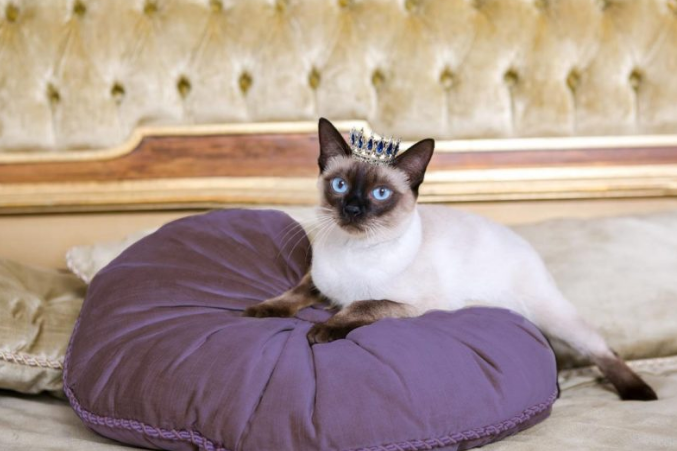
For over five thousand years, cats have sat on thrones, in temples, and in palaces right along with rulers. Rulers praised their feline companion's gracefulness, sought their hunting skills, and in some cases even considered them harbingers of good luck, or the protector of jewels and other treasures. These royal felines would influence art, stories, and even day-to-day life at court. Their stories are reminders of how power and affection come together in ways that should remind us that even kings and queens find solace in a purring furry friend.
This article will follow a few pawprints left by regal felines from ancient monarchies to today. It will also help readers see how any home can incorporate royal wisdom to help keep their feline safe and happy, so you will see, by the end, why noble families took such pains to protect their cats and how those behaviors can inspire the best care in a cat today.
More than 3000 years ago, the Nile valley honored cats as near-deities. Pharaohs associated cats with Bastet, the goddess of protection and fertility. Tomb wall paintings depict sleek and agile hunters wearing golden collars and sleeping under hewn stools. The temples also maintained catteries where priests bred high-quality kittens to give away to the public who came for blessings. Archaeologists are discovering cat cemeteries with thousands of mummified cats, all carefully wrapped, representing bonds made in throne rooms.
These cats emerged from Egypt resembling present-day breed definitions for Egyptians has slim, long bodies, almond-shaped ears, eye shape, and a propensity for human presence. Pharaohs would buy their cats jammed with ornate jewelry and if anyone harmed a cat, the Pharaoh's guards imposed a stiff penalty on them. Cats made it across the Mediterranean, and the merchants traded cats between coasts, resulting in social prestige through feline diplomacy.
The silk-robed emperors of ancient China cherished the mousers that kept their grain stores and precious scrolls safe. A record from the Tang dynasty indicates that a white-furred cat was quite popular amongst the palace as they often lounged next to the jade statues and the poets even compared their calm stare to moonlight on a placid surface. Court painters commonly added a cat at the feet of a scholar or empress to suggest a combination of wisdom and quiet strength.
Japanese Heian nobles wore small bells on silk cords to determine where their favourite kittens were located in the palaces. Over time, these bells evolved to what is now commonly found at the Shinto shrines: symbolic red collars. The regard for feline poise contributed to the maneki-neko figure our lucky cat, which is now found welcoming visitors worldwide.
Siamese kings once guarded seal-point cats as living crown jewels. Palace scribes compiled “Tamra Maew,” or Cat Poems, to list coat colors blessed with fortune. Blue-eyed specimens lounged near white elephants during coronations. Travelers who earned their monarch’s favor might receive a kitten in a woven basket, sealing alliances faster than treaties.
These early thrones proved that royal cats could serve as both protectors and diplomats, a pattern that later courts copied with gusto.
Europe’s medi halls rang with clashing beliefs. Some priests hailed cats for controlling rats that carried plague. Others feared dark coats as omens. Yet monarchs quietly relied on their prowess. Henry VIII kept a devoted mouser in Hampton Court’s kitchens to shield banquet stores. Queens embroidered cats into tapestries beside lilies and lions, hinting at layered symbolism: purity, vigilance, and silent power.
When Queen Elizabeth I came to the throne, portraits showed lap dogs more than cats, and personal diaries show she sometimes gifted kittens to her ladies-in-waiting. Our first imported long-haired cats in Britain were received in the Stuart succession as cats were imported from Persia. At court, the new animals fascinated the courtiers for their thick wooly furs, referring to them as "royal chinchillas". The first lines of Persian cats would later give way to the beautiful black-coat lines we admire today.
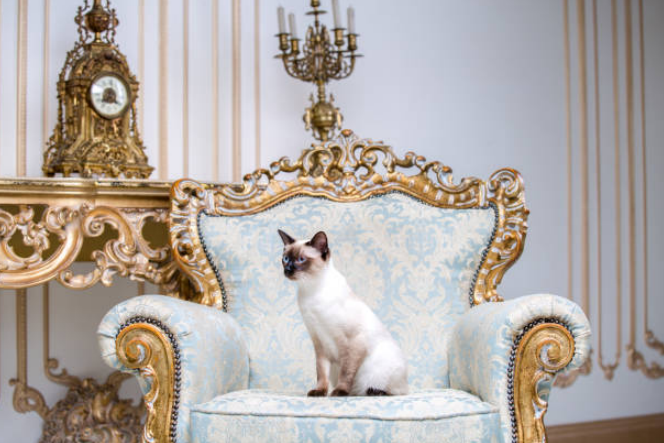
Queen Victoria loved animals and helped popularize pet ownership among the middle class. In 1871, she sponsored the first-ever cat show in London at the Crystal Palace. The press charmed with the silver tabbies and the different tortoiseshell pattern queens. The show began breed standards and initiation of pedigree registries. Notably, Victoria's very own blue Persian cat appeared in newspapers sporting its red ribbon with the words "First Lady" inscribing it.
While she ruled, there were countless references in periodicals to royal cats. There were also paintings of crowned kitties, cats astonishing with tiny scepters. The British did not just fatten cats as barn hunters after, like their queen, they similarly fattened them as indoor beings.
Catherine the Great imported nimble "mousers" from Kazan as protection to her artistic treasures in the Winter Palace. Their lineage remains today, patrolling the Hermitage Museum and enjoying conditioned retirement and yearly veterinary check-ups in the museum. The guides joke that no alarm system can compare to a cat's ears! Tourists have taken great joy in capturing photos of these workers, which is supported by international donations to that staff member's welfare fund.
Sultans at Topkapi Palace permitted the royal cats roam freely in the palaces courtyards. This practice was based on a belief that showing kindness to animals would bring a bounty of blessings. The palace cooks put bowls of food outside their kitchens - a scene we still witness to this day in the streets of Istanbul. The storytellers in Iran used to tell stories of the Shahs fondling their long-haired Angoras in the company of court musicians. Such companiable cats became valuable commodities, exported to western hemisphere and entered the breeding and husbandry systems of new embroiderers there. Other rulers in Asia and the Middle East bounded cats, and the general ethos of dealing with animals - as a show of benign mercy, civility, and courtesy to guests. The furry impressions made by a relaxed animal softened some of the stark qualities of buildings made with marble and gold.
Monarchs rarely chose animals at random; every creature carried meaning. Cats offered layered symbolism:
● Protection – Their night vision and hunting skill guarded grain, jewels, and sacred texts.
● Independence – A ruler who tamed a cat hinted at balanced authority: firm yet respectful of freedom.
● Grace – Smooth strides and lingering glances mirrored the ideal court manner.
● Mystery – Unblinking eyes suggested a link to unseen realms, pleasing mystics and poets.
These traits reinforced sovereign power without brute force. Even today, palace social media posts featuring cats often draw more engagement than official speeches, proving the timeless charm of feline branding.
Historical anecdotes entertain, but they also reveal keen husbandry. Many ancient practices match modern veterinary advice, though updated tools make them simpler.
Cats were fed fish and fowl—fresh protein provided by the Pharaohs of Egypt. Now any owner can rely on automatic feeders to provide controlled portions. Such devices eliminate the risk of overeating as well as provide organized mealtimes similar this historic practice. Likewise, consider using timed mealtimes for breakfast and dinner to keep a more pre-determined healthy weight and maintain stability in energy levels.
Also keep in mind the kidney care that is critical for many long-lived breeds. Review kidney care literature and provide a moist diet as much as possible. Ancient healers used broth; current research indicates that hydration helps support renal function.
Court gardens featured ponds where cats could sip running water. Indoors, a clean fountain mimics that flow. Choose safe fountain materials and follow a water sources maintenance routine. Flowing water entices cautious felines and reduces bacterial buildup.
Silky Angoras in shah’s harems received daily brushing to prevent mats. You can adapt the routine by removing loose hair with gentle combs. When shedding peaks, see tips on how to remove cat hair from fabric to keep furniture regal. Short sessions strengthen bonds and let you check skin for issues early.
Palaces were eventually made for long corridor runs. Modern homes can contain various vertical shelves and puzzle feeders that provide proximal range. Bah-boom! A lively chase preserves joints (and minds) while mimicking athletic pursuits of temple hunters. Indoor play ultimately helps avoid unwanted habits like pooping or scratching on soft surfaces because a stimulated cat is a relaxed cat.
Kings would often go on tours to visit provinces with beloved pets along for the ride. Quite a few things can help keep touring tension-free for King and pet: Safe crates and frequent stops. Study tips on traveling with dogs by car for good rest stop planning and how to safely transport dogs. Something like a familiar blanket sometimes gets royal scent wafting through, putting the traveling pooches at ease while away from home.
Noble households relied on herbalists; today we have veterinarians and science-based recommendations. Routine check-ups and vaccines are the basis of overall wellness. Combine that with regimented enrichment so your cat's mind stays nimble well past kittenhood.
Winston Churchill, not only Britain's war-time Prime Minister, but also one of the highest offices one can obtain (beside the royals), insisted that any future Tenants of Chartwell maintain an orange tabby - Jock - in honor of his beloved pet. And the National Trust still honors that request. Visitors now see Jock VII prowling through the garden, wearing a thin collar of Churchill tartan.
Though best known for corgis, Elizabeth II also kept a black-and-white barn cat named Willie at Balmoral. Staff had observed that she would greet him first thing every morning before meetings on the estate. His prowess as a hunter meant that he was an effective means of protecting grain stores in the estate, similar to a set of medi traditions.
The Dutch king adopted Mikkie, a rescue dog with one blue eye and one green eye. Mikkie has been photographed relaxing on state papers which reminded the world that royal pets can be a bit informal and comfortable and to use humane adoption over produce exclusivity.
Consider, it is the modern day and these stories show that royal cats can still serve a purpose when it comes to conditioning in international diplomacy and public relations. A single candid image can divert headlines and soften powerful figures and make them relatable.
One rumor claims the French queen owned a white Angora whose collar held diamonds worth a farm estate. Historians doubt the price tag but confirm she adored long-haired cats and commissioned silk cushions for them.
According to a palace legend in St. Petersburg, a gray cat escaped from the Winter Palace, a few hours before the 1917 revolution. Over time, some people have come to believe that this cat knew to leave the palace before the dynasty ended for good. Regardless of the truth of the story, it appears in child's storybooks throughout Russia.
Ancient Egyptian scrolls suggest that priests taught pharaohs a ritual that would grant an adored cat nine lives. In modern times, scholars consider this to simply be poetic praise for a cat's innate resilience and ability to survive. But the myth lingers on; countless owners of felines whisper wishes over sleeping cats, longing for ancient magic to overhear.
These stories build into the overarching cultural tapestry for royal cats, combining fact and fancy in much the same way that moonlight blends into a marble floor.
Embrace lessons from courts without gilded reserves:
1. Provide structure. Fixed meal times with automatic feeders mirror palace routines, giving security.
2. Ensure hydration. Flowing water and clean bowls echo garden fountains.
3. Respect independence. Offer quiet perches; avoid forced cuddles.
4. Celebrate beauty. Regular grooming keeps coats glossy, whether Persian fluff or sleek domestic.
5. Value health. Routine vet visits and vaccination reflect ancient temple care.
6. Preserve dignity. Use gentle handling and give choice in play to honor a cat’s sense of self.
Through these steps, any owner can grant everyday comfort once reserved for crowns.
From gilded chambers of the Nile to social-media postings from the palaces of today royal cats play an irreplaceable role in human history. They protected stockpiles of grain or art. They provided comfort to rulers at times of crisis and served as living symbols of grace. In the face of shifting power dynamics and changing fashions, one fact remains: a cat is a creature that is allowed to choose its friends. Monarchs learned (through structure, and care and most importantly respect) how to earn that trust.
In our honouring of these proud creatures, we keep alive a tradition that spans temples and castles and modern apartments. The crown has always fit best on four velvet paws, and it still does, wherever and whenever your cat decides to rest.
Label:
Popular Post
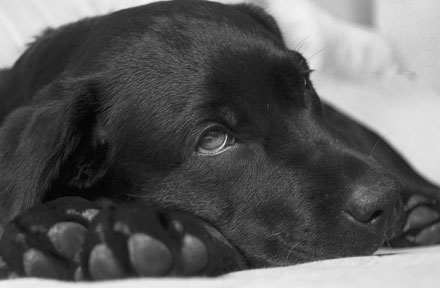
What to Feed a Sick Dog With No Appetite? [2025 Guide]
May 16, 2023

Troubleshooting Common Issues with Automatic Pet Feeders: Tips & Tricks for Pet Owners
Oct 26, 2023
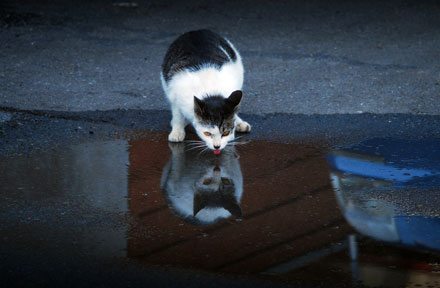
Why Does My Cat Cough After Drinking Water? 8 Potential Reasons
Mar 13, 2023
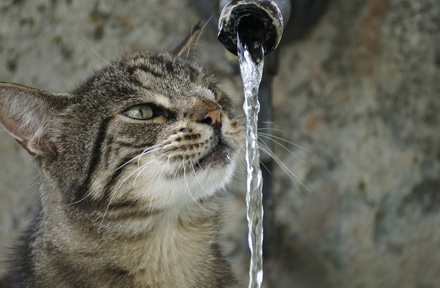
Why is My Cat Throwing up Water? Top 5 Causes Here
Feb 08, 2023
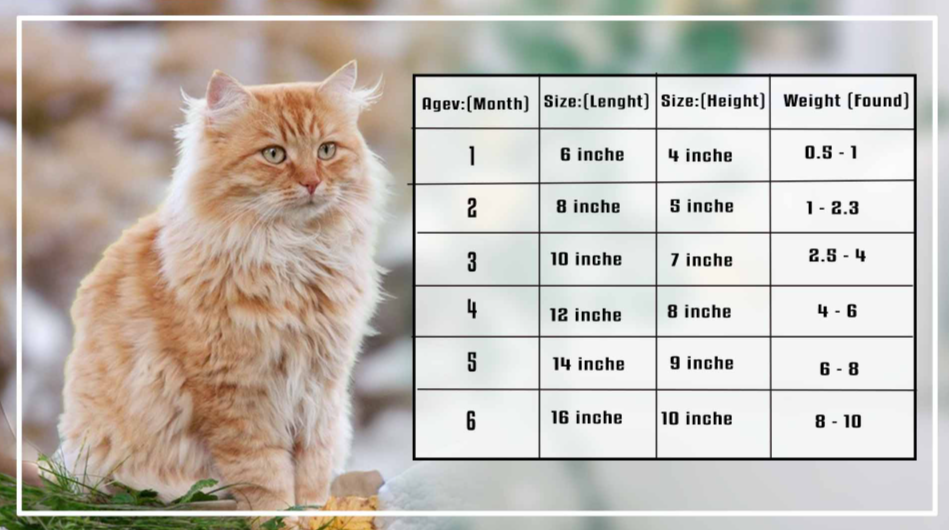
What is a standard Cat Weight chart by age Kg?
Mar 19, 2025
$99.99
$129.99
Copyright © 2025 WOPET. All Rights Reserved.